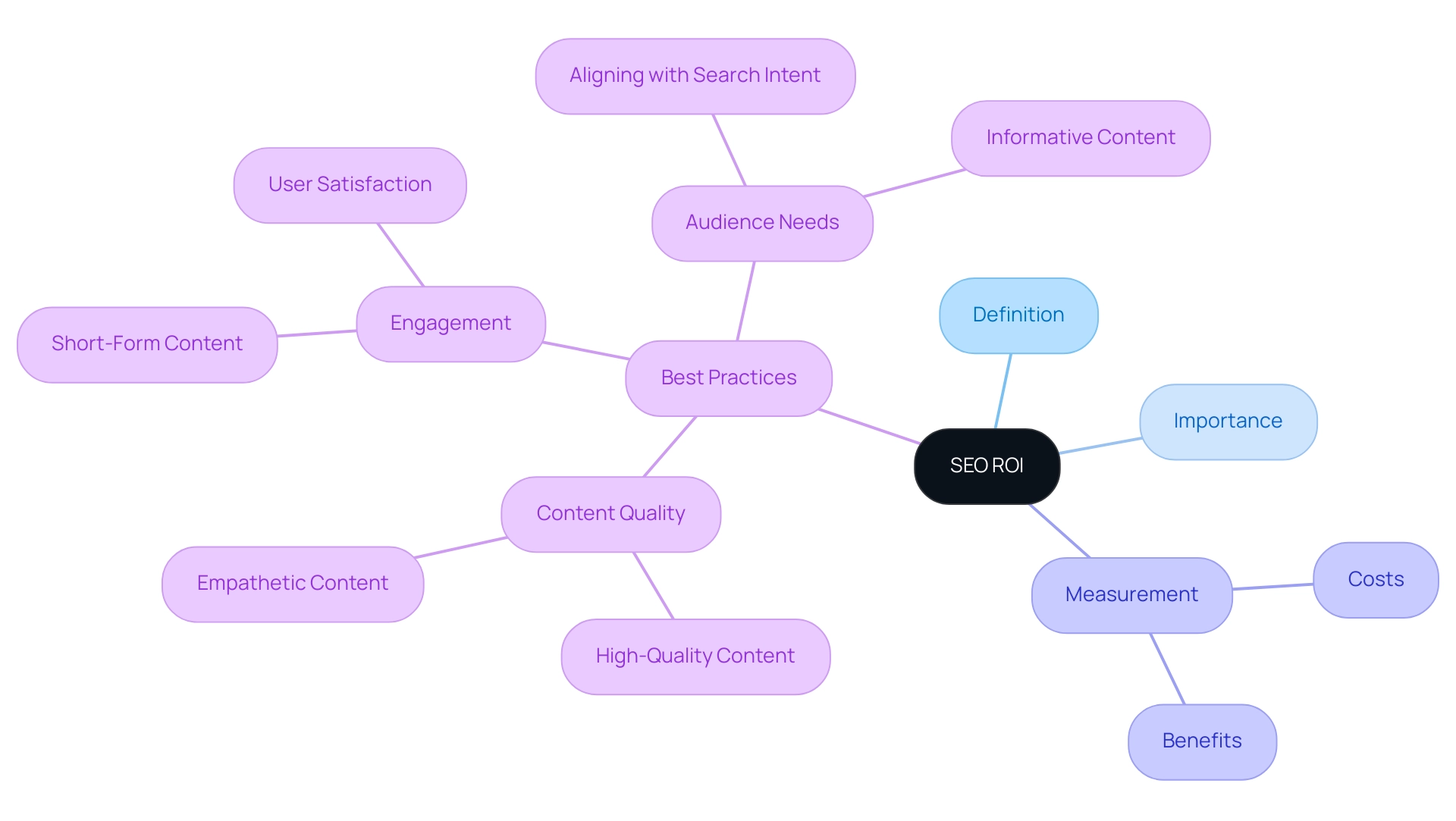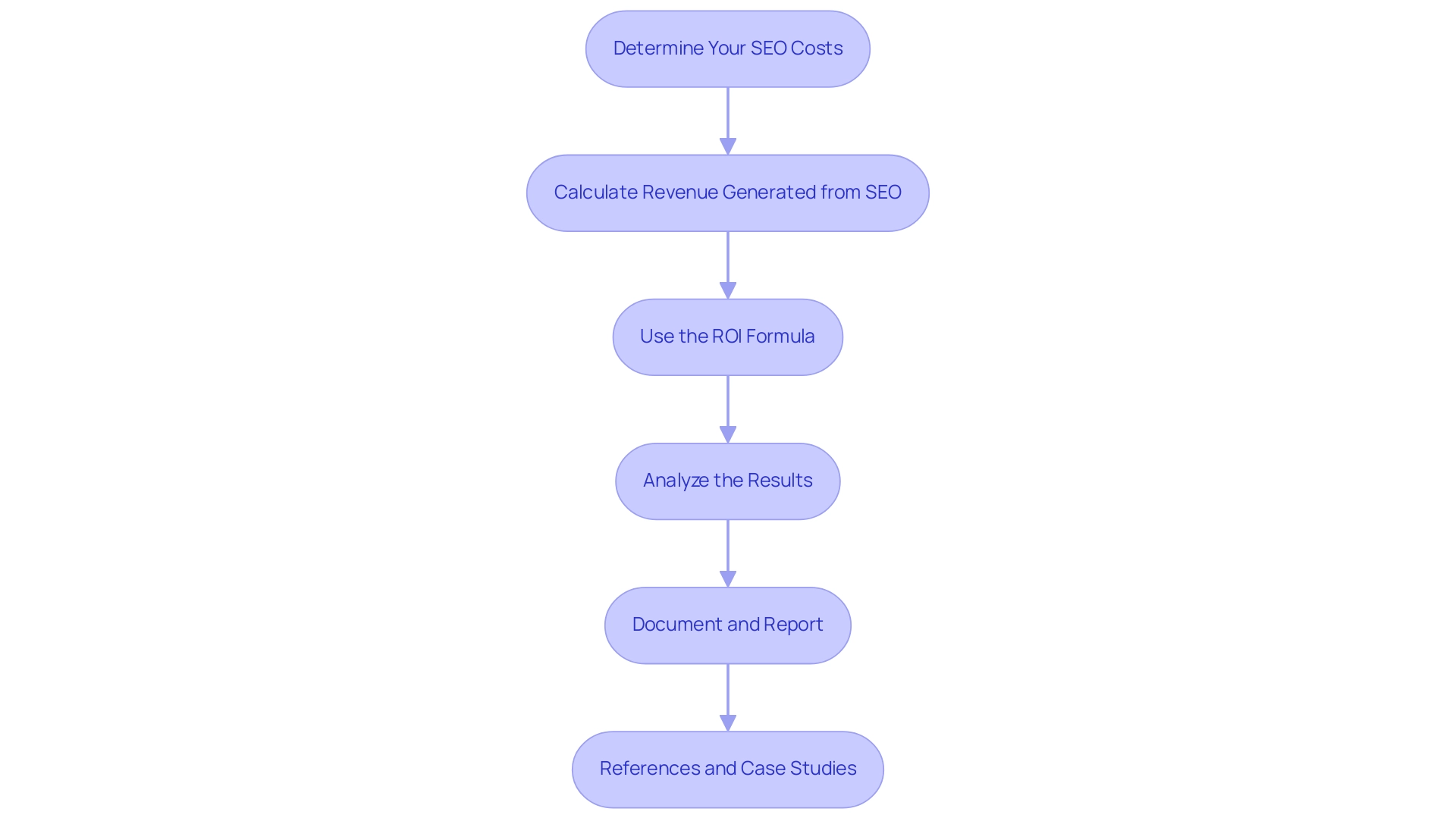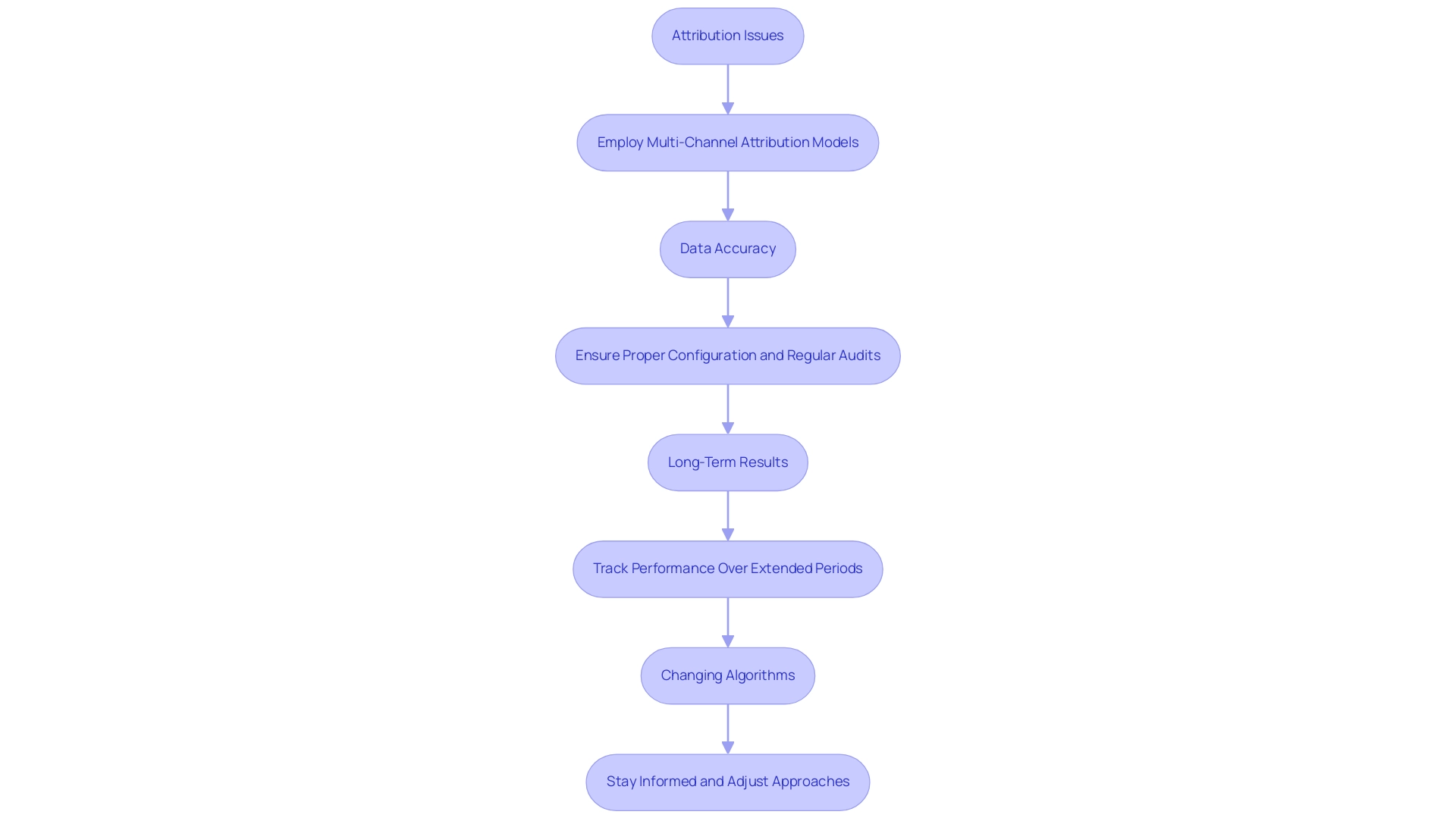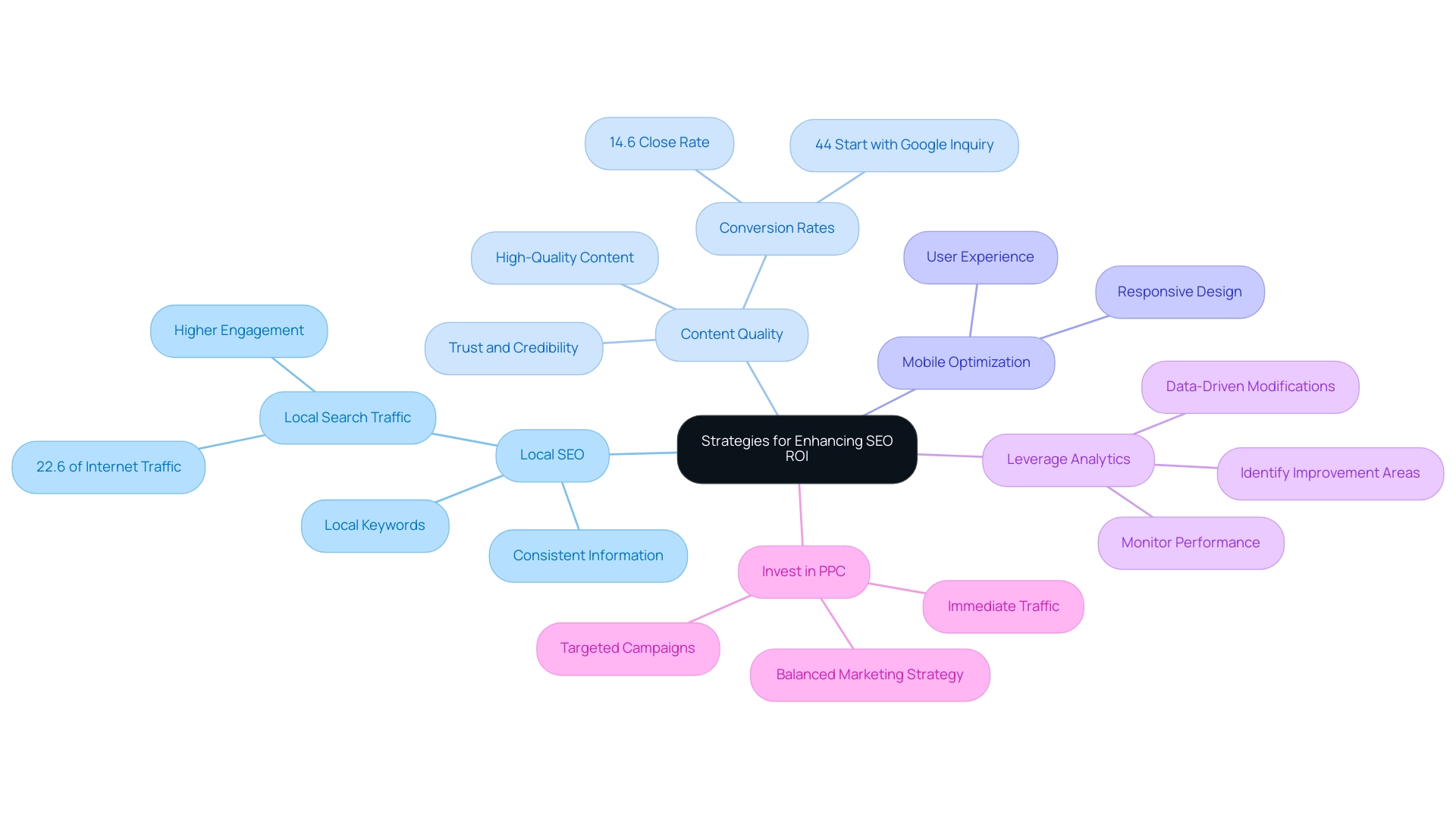Introduction
In the realm of digital marketing, understanding the return on investment (ROI) from search engine optimization (SEO) is crucial for healthcare organizations, particularly clinics striving to enhance their online presence. SEO ROI serves as a vital metric that quantifies the benefits derived from SEO efforts against the costs incurred, enabling clinics to assess the effectiveness of their marketing strategies.
By accurately measuring this ROI, organizations can:
– Refine their campaigns
– Optimize resource allocation
– Ultimately improve patient acquisition strategies
As the digital landscape continues to evolve, the ability to adapt and respond to changing algorithms and user behaviors becomes increasingly important. This article delves into the intricacies of calculating SEO ROI, highlights the significance of continuous performance tracking, addresses common challenges faced by clinic owners, and outlines actionable strategies to enhance SEO effectiveness, ensuring that healthcare providers remain competitive in an increasingly digital world.
Understanding SEO ROI: Definition and Importance
Search Engine Optimization Return on Investment (SEO ROI) explains how to measure ROI on SEO by quantifying the tangible benefits derived from SEO initiatives in relation to the associated costs. For healthcare organizations, particularly clinics, comprehending SEO ROI is imperative, as it substantiates the investment in digital marketing efforts. Clinics can assess the success of their campaigns, identify the most effective approaches, and make data-driven decisions regarding future marketing investments by learning how to measure ROI on SEO.
This analytical approach not only assists in refining marketing budgets but also significantly improves patient acquisition methods. As Jerry Brown aptly puts it,
Search Engine Optimization is one part science and one part art,
highlighting the nuanced balance required in developing effective SEO strategies. Moreover, producing high-quality, informative, and empathetic content that aligns with audience needs and intent is essential for maximizing SEO effectiveness.
Current statistics indicate that short-form content, defined as 300–600 words, is particularly effective for engaging audiences and improving SEO rankings. Additionally, a case study titled ‘Key Takeaway‘ emphasizes the importance of quality and relevance in content creation, reinforcing that while content length is a factor, the ultimate indicators of success are quality, relevance, and user satisfaction. Understanding how to measure ROI on SEO is essential for healthcare organizations to adapt to the evolving digital landscape, allowing them to remain competitive and responsive to patient needs.

Step-by-Step Guide to Calculating SEO ROI
To effectively calculate SEO ROI for your healthcare clinic, adhere to the following structured steps:
-
Determine Your SEO Costs: Begin by itemizing all expenses associated with your SEO initiatives. This includes costs for tools, personnel salaries, and any outsourced services necessary for optimizing your website.
-
Calculate Revenue Generated from SEO: Monitor the revenue directly associated with organic traffic. Utilize analytics tools to analyze sales and conversions that can be attributed to your SEO efforts, providing a clear picture of financial impact.
-
Use the ROI Formula: Employ the standard formula for calculating ROI:
ROI = ((Revenue from SEO - SEO Costs) / SEO Costs) × 100
-
Analyze the Results: Evaluate the outcomes of your calculations. A positive ROI indicates successful SEO investments, while a negative ROI signals the necessity for a strategic reevaluation.
-
Document and Report: Maintain thorough documentation of your findings. Regularly report on SEO ROI to key stakeholders, showcasing the effectiveness and value of your marketing initiatives. Effective communication is crucial; as noted in a survey from Safari Digital, 64% of clients working with SEO agencies cited poor communication as a significant pain point. This emphasizes the necessity for transparency in your SEO reporting to guarantee all stakeholders comprehend the effect of your efforts.
Grasping the extensive environment of online queries—where Google processes over 63,000 inquiries each second—demonstrates the vital significance of strong SEO practices in the healthcare sector. This immense volume of searches directly affects clinic visibility and patient acquisition, making effective SEO approaches essential for success. By following these steps meticulously, clinic owners can understand how to measure ROI on SEO and enhance the return on their SEO investments, ensuring sustainable growth in a competitive healthcare market.
Additionally, referencing case studies on calculating SEO ROI for healthcare can provide valuable insights into best practices and benchmarks in the industry.

The Importance of Continuous SEO Performance Tracking
Continuous SEO performance tracking is essential for a multitude of reasons. First and foremost, it facilitates adaptation to the rapidly changing digital landscape. Regular tracking enables businesses to respond effectively to algorithm updates and shifts in user behavior, ensuring they remain competitive.
Moreover, organizations can leverage performance data to drive data-driven decisions, allowing for strategic resource allocation that maximizes impact. As John Henry, founder of a leading agency, asserts,
A generic answer that comes from a Wikipedia style post on ‘what is a CRM’ isn’t better than an LLM in most instances, but the more opinion driven, atypical idea driven content, gets humans clicking.
This highlights that unique content, informed by performance data, can foster genuine engagement.
Moreover, ongoing observation helps in recognizing trends and patterns that can influence future SEO approaches, ensuring alignment with patient needs and preferences. Importantly, understanding how to measure ROI on SEO efforts is crucial; it allows organizations to recognize the cumulative benefits of their strategies. A notable case study illustrates this point: despite a decline in traffic, a healthcare organization experienced a 65% increase in newsletter signups, suggesting that the focus should shift from sheer volume to engagement quality.
This reinforces the notion that understanding how to measure ROI on SEO through continuous performance tracking not only gauges success but also provides the insights necessary for ongoing adaptation in 2024 and beyond. Moreover, as emphasized by recent industry conversations, creating effective SEO KPIs in a data-scarce environment presents challenges, especially with the emergence of AI platforms that provide limited traffic data. Consequently, concentrating on metrics that indicate true interest becomes essential in defending SEO’s value to executives, ensuring that clinic owners can justify their approaches and investments effectively.
![]()
Challenges in Measuring SEO ROI and How to Overcome Them
Assessing the return on investment (ROI) from engine optimization (SEO) presents several challenges that clinic owners must navigate effectively:
-
Attribution Issues: Accurately attributing revenue to SEO efforts can be complex due to the numerous touchpoints in a patient’s journey. To address this challenge, it is beneficial to employ multi-channel attribution models that encompass all marketing activities, thereby providing a holistic view of how various efforts contribute to conversions. In fact, 80% of B2B executives say projected ROI from an SEO campaign dictates what they’re willing to pay for SEO, highlighting the importance of precise attribution in decision-making.
-
Data Accuracy: The reliability of data is paramount, as inaccuracies can lead to misguided decisions. It is essential to ensure that analytics tools are properly configured, and regular audits are conducted to maintain data integrity and reliability.
-
Long-Term Results: SEO is inherently a long-term approach, which means that immediate outcomes may not provide a true reflection of ROI. It is advisable to track performance over extended periods to obtain a more accurate assessment of effectiveness.
-
Changing Algorithms: The landscape of search engine algorithms is continually evolving, which can significantly impact rankings and traffic. Staying informed about these updates and adjusting approaches accordingly is essential for maintaining or improving ROI. Significantly, 36% of SEO professionals think the headline (title tag) is the most crucial SEO component, highlighting the necessity for clinic owners to concentrate on key ranking factors that affect their visibility.
Understanding these obstacles allows clinic owners to adopt effective solutions that not only determine how to measure ROI on SEO precisely but also enhance their overall marketing approaches. Understanding ranking factors is crucial, as illustrated by case studies showing that links and content are the top two ranking factors, with the average first-page result being about 1400 words long.

Strategies for Enhancing Your SEO ROI
To effectively enhance your SEO ROI, implement the following strategies:
-
Optimize for Local SEO: Ensure that your clinic’s information is consistently accurate across all platforms. Employing local keywords is essential in drawing nearby patients, as local results represent 22.6% of all internet traffic. This targeted approach not only improves visibility but also demonstrates how to measure roi on seo by increasing patient engagement. A case study on local SEO statistics reveals that optimizing for local queries can significantly attract new customers and enhance visibility for local businesses.
-
Content Quality: Develop high-quality, relevant content that addresses the specific needs and questions of your patients. This strategy not only bolsters your SEO performance but also fosters trust and credibility with potential patients. According to Danielle MacKinlay, “A study from the Search Engine Journal found that organic inquiries have a 14.6% close rate, compared to only 1.7% for outbound leads such as direct mail or print advertising.” Creating valuable content can greatly improve conversion rates, particularly noting that 44% of online shoppers begin their purchasing journey with a Google inquiry.
-
Mobile Optimization: With a growing number of patients accessing health information via mobile devices, it is imperative that your website is mobile-friendly. A responsive design improves user experience and is a critical factor in search engine rankings.
-
Leverage Analytics: Utilize analytics tools to monitor your website’s performance and identify areas that require improvement. Regularly evaluate how to measure roi on seo by identifying which keywords and types of content are generating traffic and conversions, allowing for data-driven modifications to your strategies.
-
Invest in PPC: Complement your SEO initiatives with targeted Pay-Per-Click (PPC) campaigns. This approach can drive immediate traffic to your site while your organic SEO strategies begin to take effect, allowing you to understand how to measure roi on seo and providing a balanced marketing strategy that maximizes visibility.

Conclusion
Understanding the return on investment (ROI) from SEO is essential for healthcare organizations aiming to enhance their online presence. By effectively measuring SEO ROI, clinics can assess the success of their marketing efforts, allocate resources wisely, and improve patient acquisition strategies. The structured approach to calculating SEO ROI, along with ongoing performance tracking, enables clinics to adapt to the evolving digital landscape and maintain competitiveness.
Challenges such as attribution issues, data accuracy, and the long-term nature of SEO can complicate ROI measurement. However, by employing multi-channel attribution models and ensuring data integrity, clinic owners can overcome these obstacles. Additionally, recognizing the significance of continuous performance tracking allows organizations to refine their strategies based on actionable insights, ultimately leading to better engagement and patient outcomes.
Implementing targeted strategies such as:
- Local SEO optimization
- Producing high-quality content
- Ensuring mobile responsiveness
- Leveraging analytics
will significantly enhance SEO ROI. By adopting a comprehensive and data-driven approach, healthcare clinics can maximize their marketing effectiveness, ensuring they remain at the forefront of patient acquisition in an increasingly digital world. The focus on measuring and improving SEO ROI is not just a tactical necessity; it is a strategic imperative for sustainable growth and success in the healthcare sector.

